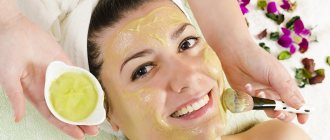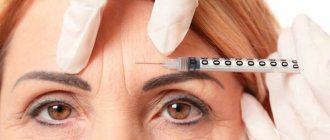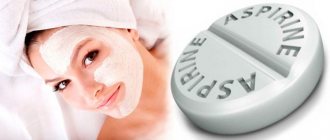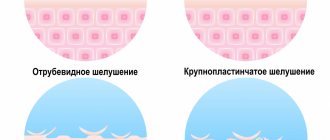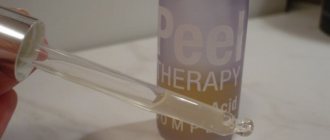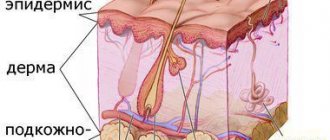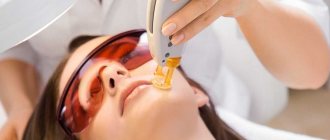The essence of the procedure
In cosmetology, peelings are divided into three types as they penetrate into tissues: superficial, medium and deep.
The use of products with acetylsalicylic acid (aspirin) belongs to the first type, that is, it cleanses of dead cells located in the upper layers of the epidermis.
Cleansing with this substance has many positive effects:
- elimination of inflammation;
- normalization of metabolic processes;
- destruction of acne, pimples, blackheads;
- inhibition of the growth of pathogenic microflora;
- improvement of skin color, whitening;
- stimulation of tissue regeneration.
To carry out the procedure, a small amount of powder or 2-5 tablets of the drug is enough.
Before you cleanse the skin yourself, you need to take into account all contraindications and side effects.
When is aspirin used
Let's take a closer look at the cases in which this product can be used to combat imperfections in our skin.
For acne
The use of acetylsalicylic acid for isolated rashes (pimples) is justified by its excellent anti-inflammatory effect, and therefore a reduction in redness. And the drying effect that this drug has helps speed up the drying of the pimple. After all, as you know, “acne needs to be dehydrated.”
For acne
Acetylsalicylic acid will help you reduce the severity of acne inflammation, reduce pain and speed up skin healing. All this is achieved due to the anti-inflammatory and antibacterial (in combination with alcohol and antibiotics) properties of Aspirin. However, in case of extensive localization of rashes, it is highly not recommended to use scrubs. Because this can increase inflammation and even provoke new rashes.
Indications for use
Aspirin facial peeling is prescribed for certain conditions. The list includes:
- shine due to excess secretion of the sebaceous glands;
- presence of pimples, acne;
- formation of facial wrinkles, early signs of tissue aging;
- the appearance of pigment spots;
- enlarged pores;
- unhealthy skin color.
Before carrying out the procedure at home, you must contact a specialist and undergo a full examination.
Buyanov Sergey Yurievich (Expert Doctor):
Acetylsalicylic acid has long been known in folk methods of treatment when applied topically, as it has all the properties of a good preservative, that is, it prevents the growth of bacteria.
Peeling recipes and how to use
There are many recipes, let’s focus on the most effective and popular methods.
Classical
Before application, the cosmetic product must be prepared:
- Place 5 tablets in a glass; if there is a shell, remove it;
- pour 0.5 tsp of clean warm water;
- some time after softening, add 1 tsp of any natural honey, 3-4 drops of retinol and tocopherol;
- mix everything well.
The resulting slurry should be applied to a previously cleansed face in an even layer. After five minutes, rinse off the product while performing gentle circular movements with your fingertips.
Cleaning
Mostly suitable for normal to dry skin.
Recommended for hyperpigmentation and acne. Recipe:
- Dilute 1 tsp of aspirin powder with a small amount of boiled water at room temperature;
- add a few drops of sunflower oil;
- Apply a thin layer to the skin, avoiding the lip area, around the eyes and hairline;
- After 10 minutes, rinse with warm water and apply moisturizer.
Recipe with clay
Due to the additional component, peeling removes inflammation, reduces the activity of the sebaceous glands, reduces pores, and eliminates shine.
Therefore, it is better to use it for girls with oily skin. The procedure is as follows:
- Mix 1 tablespoon of blue clay well with 2 crushed aspirin tablets;
- dilute the resulting mixture with a small volume of clean warm water;
- add three drops each of bergamot ether and tea tree oil;
- Using a cosmetic brush, apply evenly to a cleansed face, cover it with a damp cloth;
- after 5-7 minutes, rinse with water and soda to neutralize (1 teaspoon of soda per glass of water).
Peeling with lemon juice
For greater cleansing and penetration a little deeper into the tissue, use lemon juice. The recipe consists of several points:
- grind four aspirin tablets into powder; if there is a thick shell, remove it;
- dilute the substance with 1 tsp lemon juice;
- apply to face;
- wait no more than five minutes;
- wipe the surface of the face with a cotton pad soaked in a soda solution to neutralize;
- wash carefully, remove loose tissue with a damp soft sponge.
Which microelements can and cannot be combined
Microelements are building materials for many biological processes. Their compatibility has been well studied, which allows many pharmaceutical companies to produce various multivitamin medications that contain 2 or more active ingredients.
- Iron and copper interact with vitamin A and B2;
- Vitamin B2 increases the healing properties of zinc, which improves the absorption of A;
- Magnesium interacts with B vitamins, with the exception of vitamin B1;
- Bromine increases the absorption of phosphorus, calcium and magnesium;
- A good combination is zinc and selenium in combination with A and E, Omega-3.
Not all minerals interact well with vitamins. Some of them interfere with the absorption of beneficial components, while others reduce their effectiveness.
There are many examples of bad combinations of organic compounds:
- Vitamin B1 is poorly compatible with magnesium and calcium;
- Iron and copper interfere with the absorption of vitamin B2;
- Vitamin B9, together with zinc, promotes the formation of insoluble compounds, which impairs their absorption;
- Iron, copper and manganese make vitamin B12 inactive;
- Vitamin C enhances the removal of copper from the body.
In the process of producing multivitamins, the manufacturer always takes into account the permissible doses of one or another component of the medicine.
Safety regulations
There is no special preparation of the skin for peeling with acetylsalicylic acid. Before applying the product, it is enough to remove makeup and cleanse the skin with a gel or foam cleanser.
For better penetration of chemical elements, it is allowed to steam the fabrics over a water bath for 10-20 seconds.
We focus our attention on several tips from professionals:
- always add oil, especially if your skin is dry;
- carry out the procedure no more than once a week, otherwise side effects will develop;
- actively care for your face after peeling;
- It is advisable to apply peeling in the evening, since at night the tissues will quickly recover without the influence of an aggressive environment.
If irritation, allergies, pain or other symptoms occur, you should immediately remove the product from the skin and consult a doctor.
Aftercare
After cleansing, it is important to remove any remaining peeling and neutralize the acid.
To do this, just wash your face well, apply a moisturizing, nourishing cream or mask. The procedure can be carried out before bed and use a light cosmetic oil (for example: almond or grape seed). If a girl suffers from hyperproduction of sebaceous gland secretions, it is better not to experiment, but to use usual skin care products.
If the procedure was performed in the morning, then before going outside you need to apply a cream filter. It will protect the epithelium from the aggressive effects of the sun, ultraviolet rays and reduce the risk of age spots.
Salicylic acid, application in medicine and cosmetology.
Salicylic acid is known to many as a medicine for treating skin diseases. In addition, this same compound is the basis of the well-known Aspirin. Salicylates are salts of salicylic acid, found in many medicinal plants that have anti-inflammatory and antipyretic effects (for example, raspberries are rich in them). It is also a common ingredient in many skin care products.
Salicylic acid, lat. Acidum salicylicum (genus Acidi salicylici ) , (from the Latin salix “willow”, from the bark of which it was first isolated) - 2-hydroxybenzoic or phenolic acid, C6H4(OH)COOH; colorless crystals, highly soluble in ethanol, diethyl ether and other polar organic solvents, poorly soluble in water (1.8 g/l at 20 °C).
Isolated from willow bark by the Italian chemist Rafael Piria and then synthesized by him.
Found naturally in plants as derivatives, usually as a methyl ester glycoside, salicylic acid in particular was first isolated from willow bark, hence its name. Free salicylic acid, along with salicylic aldehyde, is found in small quantities in the essential oil isolated from the flowers of some species of spirea (Spiraea ulmaria, Spiraea digitata).
Salicylic acid is easily soluble in ethanol and diethyl ether, and slightly soluble in carbon disulfide. Solubility in water (g/l): 1.2 (0 °C), 1.8 (20 °C), 8.2 (60 °C), 20.5 (80 °C).
Pharmacological action - wound healing, antiseptic, local irritant.
Promotes cleansing of the wound from purulent discharge and its healing, eliminates perifocal inflammation. It has a distracting, keratolytic (in high concentration) and keratoplastic (in low concentration) effect. Suppresses the secretion of sebaceous and sweat glands.
It is used as monotherapy and as part of combination drugs for inflammatory, infectious and other skin lesions, incl. burns, psoriasis, eczema, dyskeratosis, ichthyosis, acne vulgaris, warts, hyperkeratosis, calluses, calluses, oily seborrhea, pityriasis versicolor; hair loss; sweaty feet.
Due to its antiseptic effect, salicylic acid is used in food preservation;
Production of azo dyes, fragrances (salicylic acid esters);
Colorimetric determination of Fe and Cu to separate thorium from other elements.
Salicylic acid is a product that is used externally. It is quite cheap, but at the same time it has several methods of use and really helps with various problems.
Principles of action on the skin:
- Deep penetration at the site of application.
- Suppression of the activity of the sweat and sebaceous glands.
- Elimination of the inflammatory process.
- Softening of the outer layer of the skin and its gradual discoloration, which leads to easy separation from the surface of the skin.
- Cleansing wounds from purulent discharge and stopping the spread of pathogenic bacteria.
- Accelerating the healing process by increasing blood flow to this area of the skin.
Properties: antimicrobial and irritant.
There are several methods of use; salicylic acid is available in different forms with different concentrations of the active substance:
- solution (aqueous and alcoholic) - 1% and 2%;
- ointment – 1%, 2%, 5%, 10%;
- powder (powder);
- paste;
- patch.
In medicine, the use of salicylic acid is effective for the treatment of skin diseases of various origins:
- pyoderma;
- mycosis of the feet;
- versicolor and pityriasis versicolor;
- psoriasis;
- seborrhea;
- hair loss;
- dermatitis.
- keratoses;
- eczema.
- healing of weeping wounds, for example, after a burn.
In these cases, it is better to use ointments with the required concentration of the active substance, and when treating lichen, the use of salicylic acid should be combined with sulfuric ointment. They will enhance each other's antimicrobial properties.
Salicylic acid is also used to reduce pain with:
- rheumatism;
- gout;
- arthrosis and arthritis.
The use of salicylic acid in cosmetology.
Indications:
- hyperhidrosis and hyperkeratosis;
- skin burns;
- acne and post-acne;
- warts;
- corns and calluses;
- black dots;
- eczema;
- infectious skin diseases;
- inflammation of the skin;
To get rid of these problems, it is recommended to use a solution of salicylic acid.
Contraindications for use:
- hypersensitivity;
- very dry skin;
- renal failure;
- pregnant women and during lactation;
- prohibited for use by children under 3 years of age.
Products containing salicylic acid and BHA are generally safe for adults when used as directed, but are not always safe for children. The Centers for Disease Control and Prevention (CDC) and the American Academy of Pediatrics recommend that children under 18 years of age not use this ingredient.
Children may have unexpected reactions to topical salicylic acid because younger skin may absorb the substance more quickly and experience more irritation.
It is always necessary to be careful with the dosage and use of salicylic acid to avoid consequences, such as burns.
Salicylic acid in cosmetology belongs to the class of BHA acids. It is a fat-soluble acid, which means it can penetrate deep into cells through the pores, and also has antiseptic and anti-inflammatory properties. Therefore, it is perfect for problematic, rash-prone and oily skin, and helps fight open and closed comedones.
BHA acids can dry out the skin due to interaction with sebum. To prevent this from happening, use products with a salicylic acid concentration of 0.5–2% and do not forget about moisturizer and sunscreen.
Salicylic acid is widely used in dermatology and cosmetology, as a weak antiseptic, plus an irritant and keratolytic agent. Also, it is an excellent additional agent for synergy with other peeling components due to the phenolic group, denatures proteins and facilitates passage through the stratum corneum. During the chemical peeling procedure using salicylic acid, the stratum corneum and epidermis are damaged, recovery takes place within 1-2 days, and during this time pronounced peeling is observed. Clinical indications for their use: hypermigmentation, melasma, moderate photoaging, acne and post-acne. The minimal effect is visible after the first procedure, but a significant improvement in the appearance of the dermis occurs after several procedures; the appointment and implementation of the procedure is carried out by a specialist.
Alternatives to salicylic acid.
Alpha Hydroxy Acid (AHA): Like BHAs, AHAs work to exfoliate the skin and remove dead skin cells. AHAs (such as glycolic acid) are also effective against acne, and these substances can help your skin appear smoother and more even-toned.
Benzoyl peroxide: This product is effective as an acne treatment, but instead of exfoliating, benzoyl peroxide kills bacteria that cause inflammation and dries out the affected skin.
Scrubs: When you really want to exfoliate your skin, using a brightening scrub can be your best friend. Look for ingredients such as vitamin C and citric acid.
Difference between salicylic acid and benzoyl peroxide.
Salicylic acid is a legendary exfoliant and benzoyl peroxide is an organic aromatic compound and a very worthy antibacterial analogue of “salicylic acid” that kills acne-causing bacteria right inside the pores. Dermatologists believe that benzoyl peroxide is better suited for sensitive skin, since salicylic acid is still an acid that can lead to peeling, irritation and allergic reactions if not handled carefully.
What percentage is best to use?
For facial care, the optimal concentration of salicylic acid is 0.5-2%.
For use on the body in almost all cases, you can use a more active salicylic acid in a concentration of about 3%. It is important to consider: if you are not sure how your skin will react to the use of a product containing salicylic acid, first consult with a specialist who will give you all the necessary care recommendations.
Possible side effects:
If you overuse salicylic acid or use too much over a long period of time, side effects may occur. Most often these problems are associated with skin reactions.
Below are some of the most common side effects:
Sun and Chemical Burns – Excessive amounts of salicylic acid can cause chemical burns because it makes the skin overly sensitive to the sun. Sunburn is a common side effect for people who use any product containing BHA, so be sure to apply sunscreen along with any salicylic acid-based product.
If your skin is dry or feels oily, a salicylic acid treatment can have a drying effect as it helps exfoliate and renew the skin. Sometimes, however, these products have the opposite effect as the skin overreacts to dryness by producing more sebum than usual. Since both of these problems can lead to acne and other skin problems, reduce your salicylic acid intake to reduce irritation.
Salicylic acid is naturally occurring, but that doesn't mean this exfoliant and anti-inflammatory is for everyone. Whether you've been using a salicylic acid product for years or are considering adding it to your routine, be sure to understand its uses, applications, and potential side effects.
Sources: https://cosmar.com.ua/, https://www.letoile.ru/, https://iledebeaute.ru/, https://med.vesti.ru/, https://www. kiz.ru/.
Educational phone numbers : 8-812-248-99-34, 8-812-248-99-38, 8-812-243-91-63, 8-929-105-68-44
Application for ordering products here
Seminar schedule here
Photos before and after
Contraindications
Aspirin peeling has a lot of advantages and positive effects, however, not everyone can use it.
Cosmetologists prohibit such cleansing in the following cases:
- pregnancy;
- breastfeeding period;
- individual intolerance to the drug or additional components;
- risk of developing an allergic reaction;
- damage to the skin: scratches, abrasions, wounds, burns;
- active inflammation, presence of pustules;
- the formation of pathologies in which it is prohibited to use acetylsalicylic acid in any form;
- skin irritation after hair removal.
Despite the relatively small list of restrictions, you need to know them and not ignore them.
Buyanov Sergey Yurievich (Expert Doctor):
Despite the fact that acetylsalicylic acid is practically not absorbed into the blood during peeling, it should be borne in mind that if you have had an allergic reaction in the past, anaphylactic shock may develop even from superficial contact of the drug with the skin.
What vitamins cannot be combined
Good compatibility of vitamins can provide the body’s daily needs. If you take substances that interact poorly with each other, at best there will be no effect from such treatment, and at worst, the risk of developing side effects will increase.
Before you start taking vitamins, you should familiarize yourself with their compatibility with each other.
Poor compatibility can disrupt the absorption of one or more components.
- Vitamin D cannot be combined with A, since they neutralize each other’s effects;
- Vitamin B2 leads to the oxidation of B1;
- Vitamin B1, if combined with B12, can cause an allergic reaction;
- Vitamin D is not absorbed if taken with vitamin E;
- Vitamin B12 eliminates the properties of C and PP;
- Vitamins A and D neutralize each other;
- Vitamins E and D must be taken separately, since the first component is poorly absorbed under the influence of another substance;
- Oxidation of vitamin B1 occurs under the influence of vitamin B2.
Many multivitamins contain substances that interact poorly with each other, but their composition is selected in such a way that it does not have a negative effect on the human body.
Advantages and disadvantages
Like any other procedure, aspirin peeling has its advantages and disadvantages. Details are shown in the table.
| pros | Minuses |
| Several skin problems are solved in one procedure | Risk of developing an allergic reaction in the form of urticaria, dermatitis |
| Suitable for any skin type, you just need to choose the right auxiliary elements | If the procedure is carried out incorrectly, there is a risk of drying out the skin or causing a burn. |
| Low cost | Unexpressed effectiveness compared to salon cleansing with more serious chemicals |
| Possibility of doing it at home |
Vitamin compatibility chart
The table will help you become more familiar with the possible combination of useful components.
- “+” - good;
- “-” - bad;
- “#” is neutral.
| A | IN 1 | AT 2 | AT 5 | AT 6 | AT 9 | AT 12 | WITH | E | D | |
| A | A | # | # | # | # | # | — | # | + | # |
| IN 1 | # | IN 1 | # | # | # | # | # | # | # | # |
| AT 2 | # | # | AT 2 | # | + | + | — | # | # | # |
| AT 5 | # | # | # | AT 5 | # | # | + | # | # | # |
| AT 6 | # | # | + | # | AT 6 | # | # | # | # | |
| AT 9 | # | # | + | # | # | AT 9 | + | # | # | # |
| AT 12 | — | # | — | + | # | + | AT 12 | — | — | # |
| WITH | # | # | # | # | # | # | — | WITH | + | # |
| E | + | # | # | # | # | # | — | + | E | # |
| D | # | # | # | # | # | # | # | # | # | D |
Opinion of cosmetologists
Experts' opinions were divided. Some cosmetologists say that peeling is inappropriate, because against the background of a high risk of complications, the effect is insignificant. Professionals say that you can buy good products in stores without wasting time preparing masks from aspirin and other substances.
Others believe that if you act strictly according to the instructions, there are no negative consequences, and aspirin peeling is quite suitable for home care. They note that it is better to combine such cleansing with salon procedures, so the rejuvenating effect will be more noticeable.
Vitamin interactions
To support vitality and prevent a number of diseases, many people prefer to use multivitamin pharmaceuticals. When choosing such drugs, it is important to take into account the compatibility of the vitamins that are present in a particular drug. We can speak of a correct combination if 2 or more components interact with each other, and they enhance each other’s effect and have a positive effect.
With a deficiency of one or more nutrients, as well as with their excess, a person develops serious health problems.
To exclude such conditions, the combination of vitamins must be correct and balanced.
- A and E interact well with each other, but there should be less of the latter, otherwise the absorption of the former is impaired;
- B2 (riboflavin) and B6 (pyridoxine) are ideal with K;
- B12 can be combined with B5;
- P enhances the properties of vitamin C, E, B9 (folic acid);
- F enhances the properties of A, D, E, as well as group B;
- B6 (pyridoxine) and B2;
- B12 (cyanocobalamin) is recommended to be used in combination with B5, B9;
- Vitamin C increases the activity of vitamin E.
With the right combination, there will be a certain result, which will be different from if each component is taken separately.

